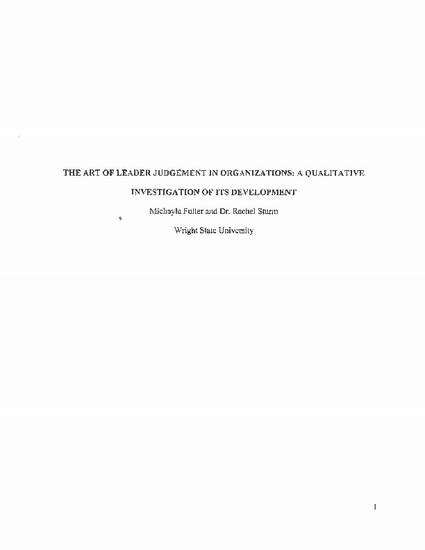
It is estimated that each person faces approximately 35,000 decisions a day (Sollisch, 2016). Whereas decision-making can be scientifically reduced down to a set of steps that includes things such as identifying the problem (e.g., I am hungry). weighing decision criteria (e.g., do I want something healthy or tasty?), and generating alternative courses of action (e.g., will I get a bagel or have some cereal?), how one responds to the decision-making process overall, including identifying an appropriate course of action to [eventually] take, lies at the heart of judgement. Specifically, judgement requires that individuals, such as a leaders, make decisions knowing that everything is contextual and always changing, but are able to take action in a timely fashion (Nonakam & Takeuchi, 2011 ). Hence, judgement, unlike the rational decision-making process, is not a structured, consistent process; some judgements can be made in less than 5 minutes, while others can take weeks/months of contemplation. Also, judgement engages an individual's more creative side and imagination, which illustrates it's more artful nature.
